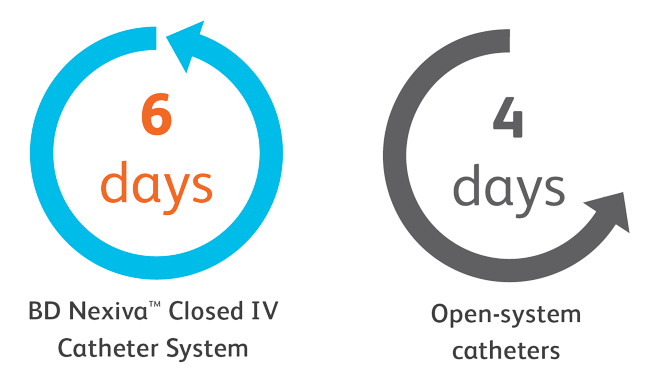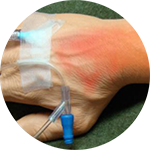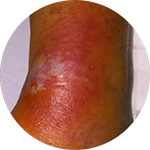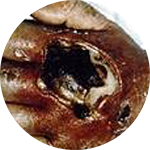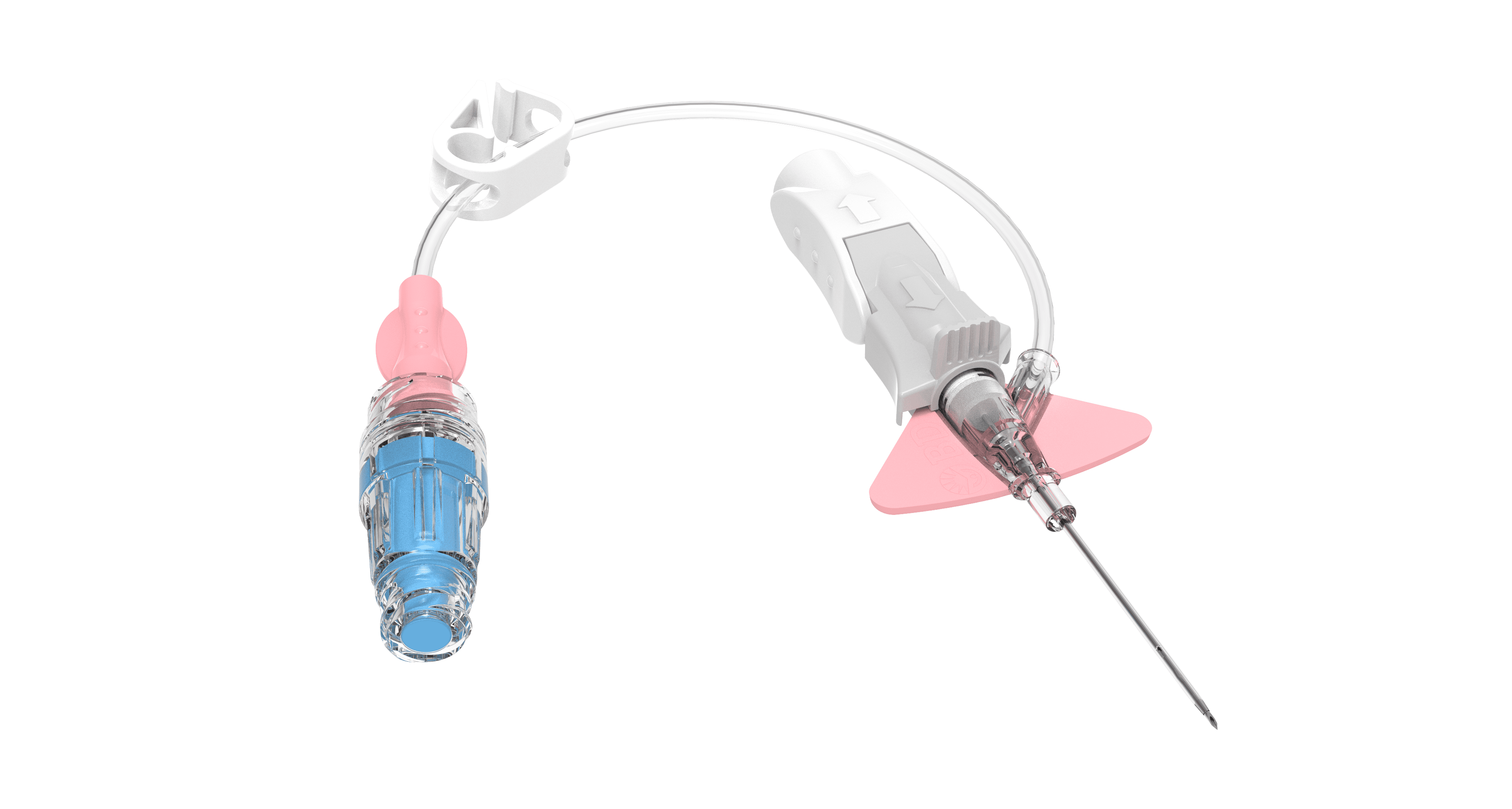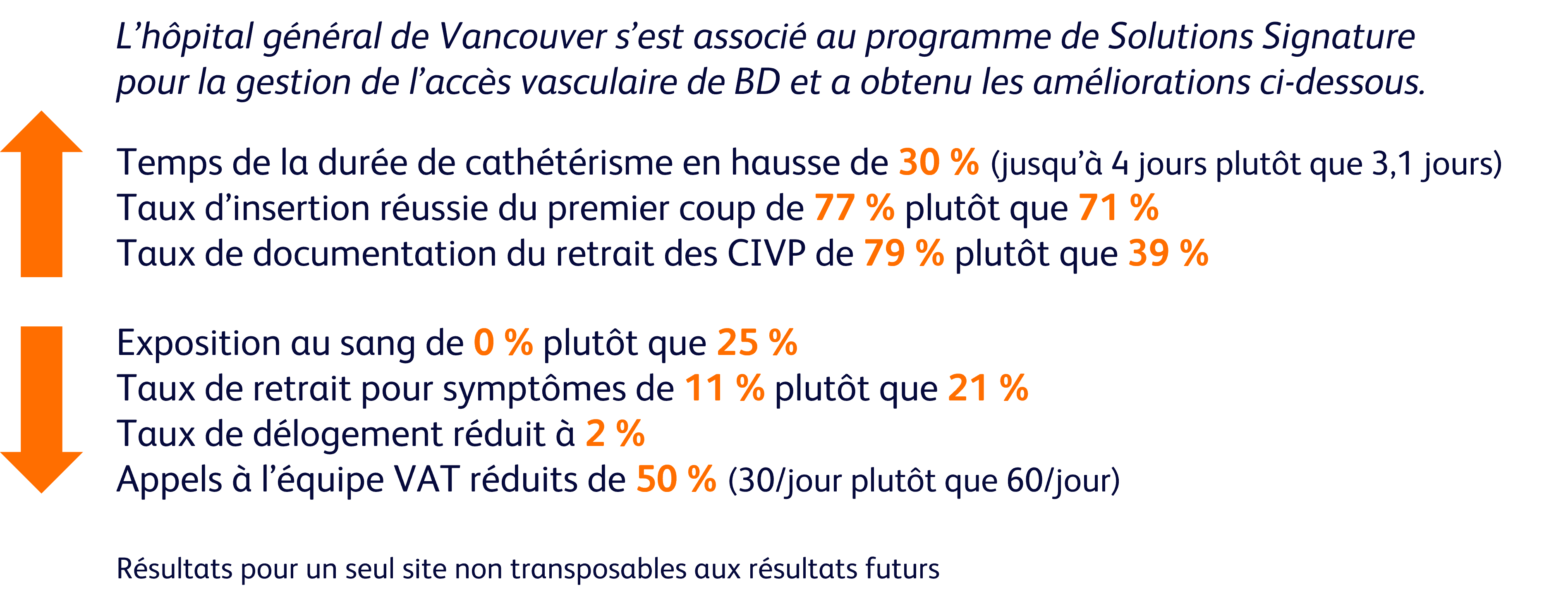Par système clos, on entend un système entièrement intégré auquel sont préfixés une tubulure de rallonge, une plateforme de stabilisation et des connecteurs sans aiguille.
* Comparativement à un cathéter à système ouvert.
† Avec l’utilisation d’un pansement de stabilisation au point d’insertion I.V.
‡ Comparativement au cathéter Introcan SafetyMD de B. Braun doté du dispositif de stabilisation StatlockMC IV Ultra de Bard.
§ Comparativement à un cathéter en FEP.
1. González López J, Arribi Vilela A, Fernández Del Palacio E, et al. Indwell times, complications and costs of open vs closed safety peripheral intravenous catheters: a randomized study. J Hosp Infect. 2014;86(2):117-126.
2. Bausone-Gazda D, Lefaiver CA, Walters SA. A randomized controlled trial to compare the complications of 2 peripheral intravenous catheterstabilization systems. J Infus Nurs. 2010;33(6):371-384.
3. Association canadienne d’accès vasculaire. (2019). Lignes directrices canadiennes sur les accès vasculaires et la thérapie intraveineuse. Pembroke, Ontario : Pappin Communications.
4. Gorski LA, Hadaway L, Hagle ME, et al. Infusion therapy standards of practice. J Infus Nurs. 2021;44(suppl 1):S1-S22.
5. van Loon FH, Timmerman R, den Brok GP, Korsten EH, Dierick-van Daele AT, Bouwman AR. The impact of a notched peripheral intravenous catheter on the first attempt success rate in hospitalized adults: Block-randomized trial. The Journal of Vascular Access. 2022;23(2):295-303.
6. Maki DG, Ringer M. Risk factors for infusion-related phlebitis with small peripheral venous catheters. Ann Intern Med. 1991;114(10):845-85.
